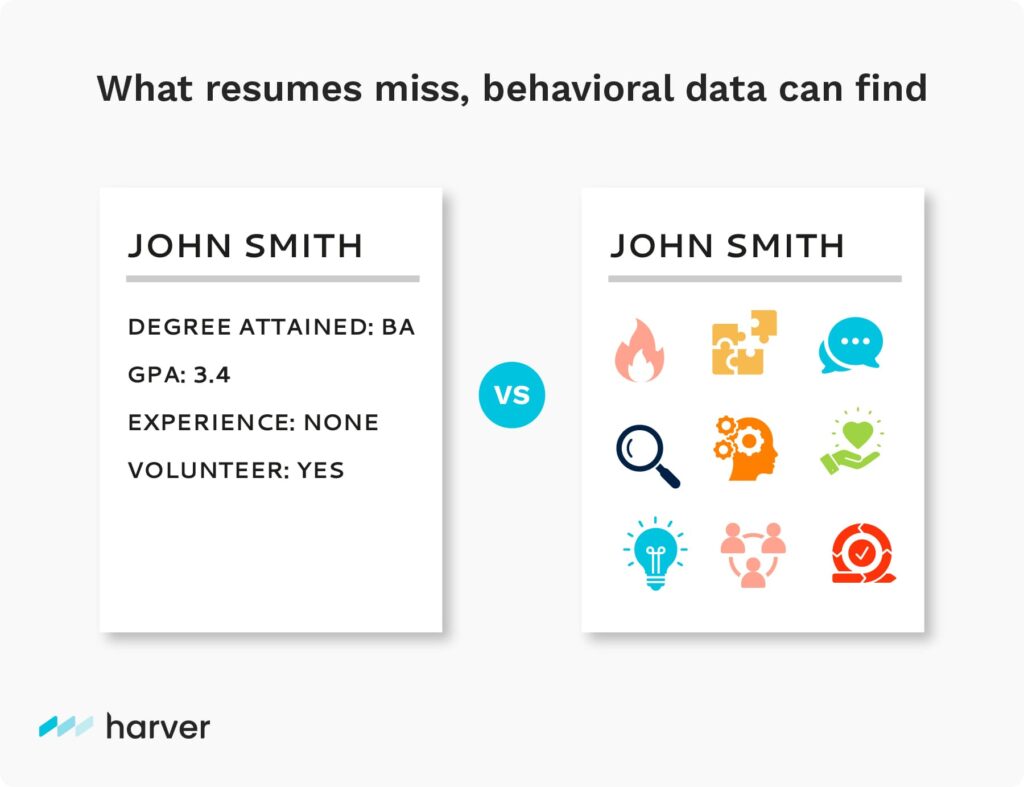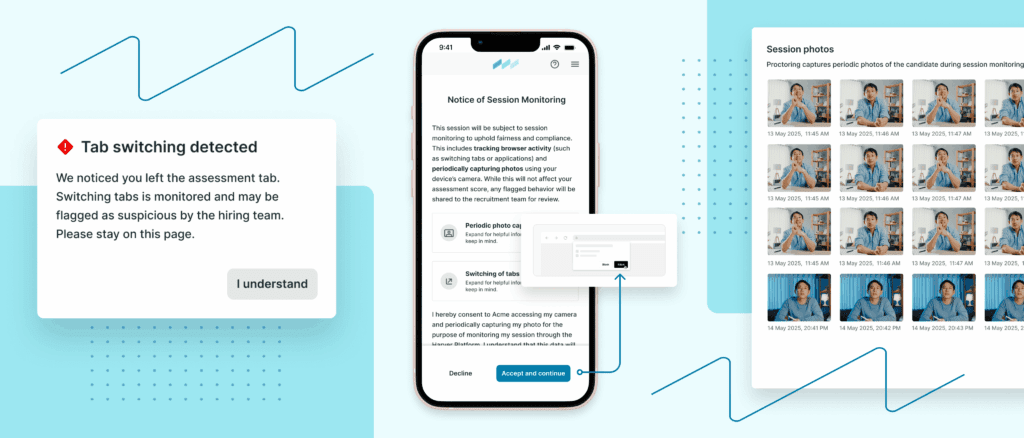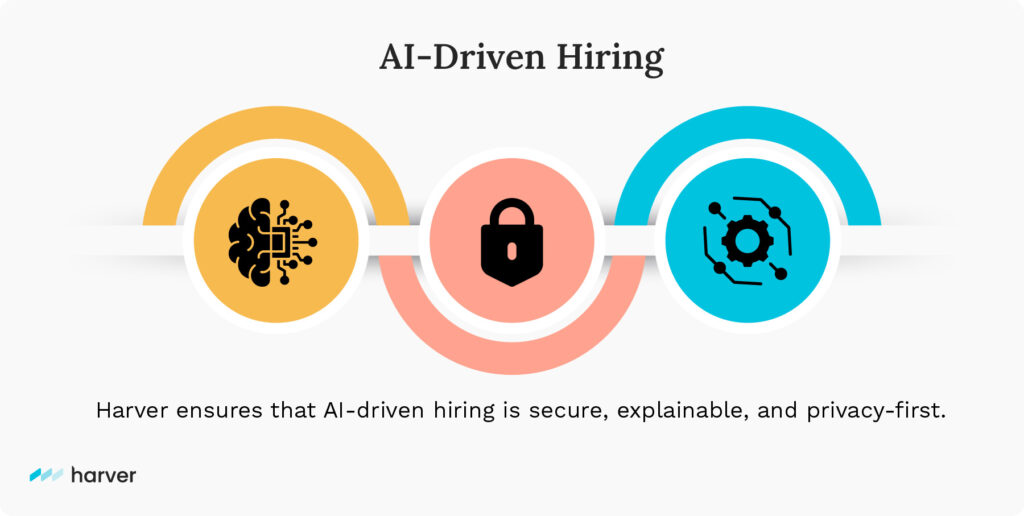Artificial intelligence is everywhere in today’s workplace, and hiring is no exception. AI is accelerating how people apply for jobs and transforming how organizations screen, assess, and select candidates.
But while AI holds enormous potential for the industry, it’s not without its risks. New technology brings new challenges, and without the right approach, AI can just as easily complicate hiring as improve it.
Let’s look at the biggest AI-related obstacles hiring teams face today and how to overcome them.
1. The AI Skills Gap
AI is evolving quickly, and the demand for AI-savvy talent is outpacing supply. Deloitte’s latest research found that nearly half (45%) of tech executives cite GenAI expertise as their most urgent skills gap.
But you don’t necessarily need to look only at candidates with hands-on experience. You need to identify candidates with the potential to develop AI skills.
Many high-potential individuals get missed in traditional hiring processes because they lack the typical signals like specific degrees or job titles. But today, transferable skills are just as important as technical ones.
To find them, companies need to evaluate how candidates think, adapt, and problem-solve.

Solution: Use assessments to surface potential
- Cognitive assessments identify quick learners who can keep up with evolving technology.
- Behavioral assessments highlight critical soft skills like empathy, collaboration, and adaptability.
- Job knowledge and skills assessments ensure a solid technical foundation.
Learn more about how assessments identify transferable skills.
2. The Rise of AI Cheating
With GenAI job seekers can generate polished resumes, tailored cover letters, and answers to open-ended application questions.
AI-generated content enables candidates to look qualified without proving they actually are, creating confusion and uncertainty for recruiters.
Solution: Change how you evaluate candidates

At Harver, we maintain the highest standards of integrity with a three-tiered fraud prevention strategy that detects, deters, and reports fraudulent activity to ensure every candidate is evaluated fairly. Some of the capabilities include:
- Proctoring: As one of our newest features, proctoring leverages photo and behavioral data to verify identities, detect suspicious activity (e.g., tab switching, multiple faces, extended inactivity), and prevent external tool usage with copy/paste restrictions and focus change detection—all while maintaining a smooth candidate experience.
- Built-In Cheating Deterrents: Harver’s assessments include randomized questions, response-time analysis, proprietary detection algorithms, and candidate affirmations to reduce cheating opportunities from the start.
- Task-Based Assessments: Real-world tests like Typing, Agent Simulation, and Spontaneous Speech assessments measure practical ability, making it harder for candidates to rely on AI tools or scripted answers.
3. AI Has Flooded the Application Funnel
Widespread access to AI has makes it easy for job seekers to automate and accelerate their application process. LinkedIn now sees over 11,000 job applications submitted every minute (a 45% increase from the previous year) largely due to AI.
While a wealth of applicants may sound like a recruiter’s dream, it can often feel more like a nightmare. Sifting through thousands of resumes takes time, and in that time, top candidates may accept offers elsewhere.
Solution: Fight fire with fire
Harver’s Smart Job Navigator uses data-driven insights and intelligent automation to filter, route, and match applicants at scale without sacrificing quality.
- Quickly eliminate unqualified candidates
- Automatically connect top talent to the right roles
- Reduce manual workload and avoid bottlenecks
With Smart Job Navigator, recruiters no longer have to choose between moving fast and hiring right. It’s a smarter, more efficient way to connect the best people to the right roles.
4. Not All AI Is Created Equal
While AI-driven hiring tools like Smart Job Navigator are revolutionizing how companies hire, there’s a popular misconception that one AI offering is as good as the next. But that’s simply not the case.
There’s a wide range of variables that need to be considered when it comes to leveraging AI.
- Data quality
- AI is only as good as the data it analyzes. Pulling information from overly-optimized resumes or using unstructured data without any validation just automates flawed decision-making.
- Companies also need to be conscientious of how that data is protected given the sensitive nature of the protected personal information (PPI) candidates provide.
- Candidate experience (CX)
- Some tools, like basic AI bots, can make the hiring journey feel impersonal. When candidates feel like they’re talking to a machine instead of applying to a company that values them, drop-off increases.
- While today’s applicants expect a fast, seamless process, they also want to feel seen. The human touch still matters, and AI shouldn’t replace it.
- Ethics & bias
- “Black box” algorithms can create serious problems when using AI in hiring. Without proper guardrails, AI models can introduce or even amplify bias.
- Poorly implemented AI tools may violate privacy laws, erode trust, and expose companies to legal or reputational risks.
- One example: A recent class-action lawsuit against Workday alleges that its AI hiring tool discriminated based on age. The company is now facing major waves among customers and candidates alike.
Solution: The Harver Approach
At Harver, we’re committed to using AI ethically and responsibly in our hiring solutions. That means:
- Basing decisions on validated, empirical assessments
- Empowering recruiters with real, job-relevant insights (not replacing human judgment)
- Prioritizing fairness, transparency, and compliance in every solution

We believe in the power of science, the importance of accountability, and hiring processes that are as thoughtful as they are efficient.
Looking Ahead
AI isn’t going anywhere, but neither are the challenges it introduces to modern hiring. In fact, they’ll probably only get more numerous and complex.
But with the right strategy, employers can turn those challenges into opportunities.
Need help making your hiring process AI-ready?


